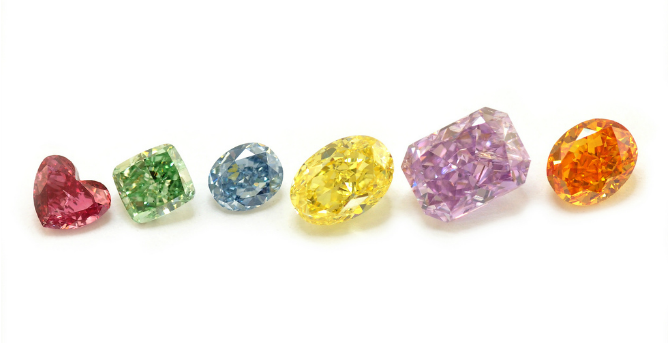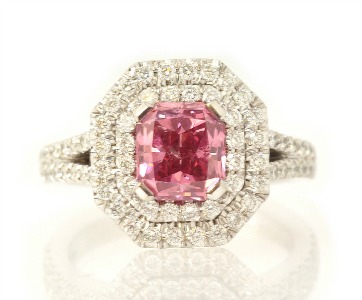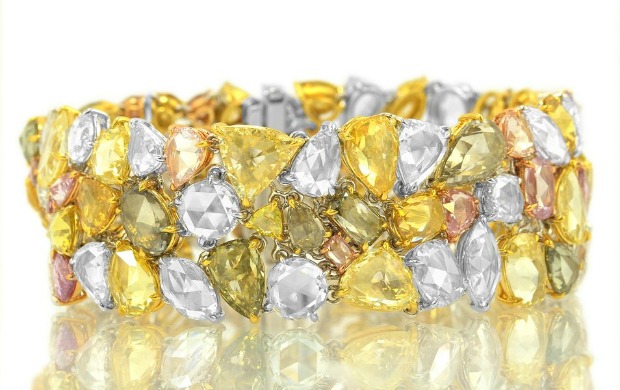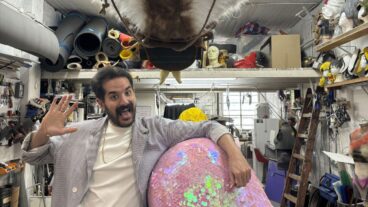If you don’t have $1 million to spend on the Prosperity Diamond ring with its vivid pink 1.68-carat stone, you can settle for seeing it up close – but first you must be photographed and fingerprinted to gain entry to Israel’s Diamond Exchange (“Bourse”) in Ramat Gan, just north of Tel Aviv.
Colored diamonds account for just one in every 10,000 carats mined globally each year. Long prized for their rarity and beauty, they are hot-ticket items today — in part thanks to celebrities such as Jessica Biel, who got a pink diamond engagement ring from Justin Timberlake. Others are snatching them up as investments, given that their appreciation in value often leaves platinum, gold and colorless diamonds in the dust.
Spread the Word
• Email this article to friends or colleagues
• Share this article on Facebook or Twitter
• Write about and link to this article on your blog
• Local relevancy? Send this article to your local press
All of this makes for a highly competitive field for Israeli and international purveyors of the pink, yellow, blue, violet, brown, orange and green gems.
ISRAEL21c went to Ramat Gan to visit Leibish & Co. Fancy Color Diamonds, creator of the Prosperity Diamond and lots more. Leibish is Israel’s only online seller of colored diamond jewelry and one of the world’s leading brands for conflict-free colored diamonds, moving $25 million worth of merchandise per year.
The day we visited, Leibish and Rosalind Polnauer were celebrating the arrival of their 10th grandchild, born to son Itzik, the company’s ecommerce manager and recently nominated Young Leader of the Year by Jewellery News Asia.
It’s unusual to find the whole clan in their Israel offices, as Leibish and his son Shmulik (certified gemologist and head buyer) are often jetting around the world bidding big bucks for precious inventory.
“We are looking for items for our clients that nobody else has. We pay the price to get access to them,” Leibish Polnauer tells ISRAEL21c with a warm smile.
Diamonds by courier
At 63, former diamond polisher Leibish is in the prime of his career, having had the foresight to open a retail website in 1995, and in 2001 to begin supplementing the loose stones with jewelry designed in-house by daughter Chavi Itzhakov.
It took some time for online gem buying to take with the public, but being the pioneer positioned Leibish & Co. to transition smoothly from a mostly offline to-the-trade business to a mostly online consumer business.
“About 60-65% of our revenue is now B2C [business to consumer], and there is a similar parallel from loose stones to finished pieces,” says CEO Yossi Polnauer.
To keep its online edge, the company employs a full-time photographer and search-engine optimization team. Merchandise is delivered to customers via FedEx courier or, for more expensive pieces, Israel’s international armored courier service Malca Amit.
Orders come in from anywhere people have discretionary income – including, implausibly for an Israeli company, Saudi Arabia, Malaysia and Indonesia – though the majority are from English-speaking countries and the Far East. Leibish & Co. also has sales offices in New York and Hong Kong.
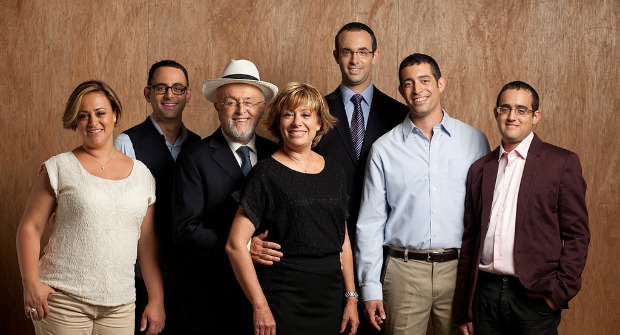
“People are a bit scared to make a huge investment online, but we do everything we can to give excellent pictures and videos of the products, along with all the certification and specs, and slowly but surely, this is gaining acceptance all over the world,” says marketing manager Benji Margolese.
Phenomenal colors for happy occasions
Leibish Polnauer has been specializing in colored diamonds since the early 1990s. Born in post-war Hungary, he sourced some rare pear-shaped brown diamonds for London’s Royal Crown jeweler in 1979, two years after he and Rosalind had moved to Israel from New York.
He is still captivated by these gems though he and his family don’t drape themselves in their own goods. “We don’t drive Mercedes or wear $100,000 diamond rings. We leave that all to our customers,” he jokes.
Margolese explains that pure-carbon clear diamonds can take on hues from a variety of natural conditions. If nitrogen mixes with the carbon, the gem will be yellow. Boron turns it blue. Pressure on the stone will make it pink, while underground radiation results in a green diamond.
Browns or yellows are most common. “The rarest color usually is said to be red, but we’ve seen only two intense purple or violet diamonds in the past 10 years,” says Margolese. “We’ve seen some of the rarest diamonds and they’re phenomenal.”
Not every customer is mega-wealthy. Some colored diamonds are even less expensive than white ones.
“You can spend $700 or $800 on a smaller stone, like a 14-point fancy pinkish brown,” says Margolese. “On the other hand, you can spend $1 million for a vivid pink that’s 1.68 carats. It’s not so much bigger, but the color makes the difference. Color is king in fancy diamonds.”
Like any reputable online business, Leibish & Co. offers a 30-day money-back guarantee, and repeat customers can sometimes trade, say, a yellow for an orange. “Keeping a connection with the customer is worth a lot more than that specific stone,” says Margolese.
A lot of thought also goes into packaging, he adds. “If someone invests $20,000 in a piece of jewelry, they don’t want to get it in a cardboard box. The packaging should complement the occasion of the purchase. Nobody’s buying a diamond because they had a bad day at work. We want to keep a happy occasion happy.”




